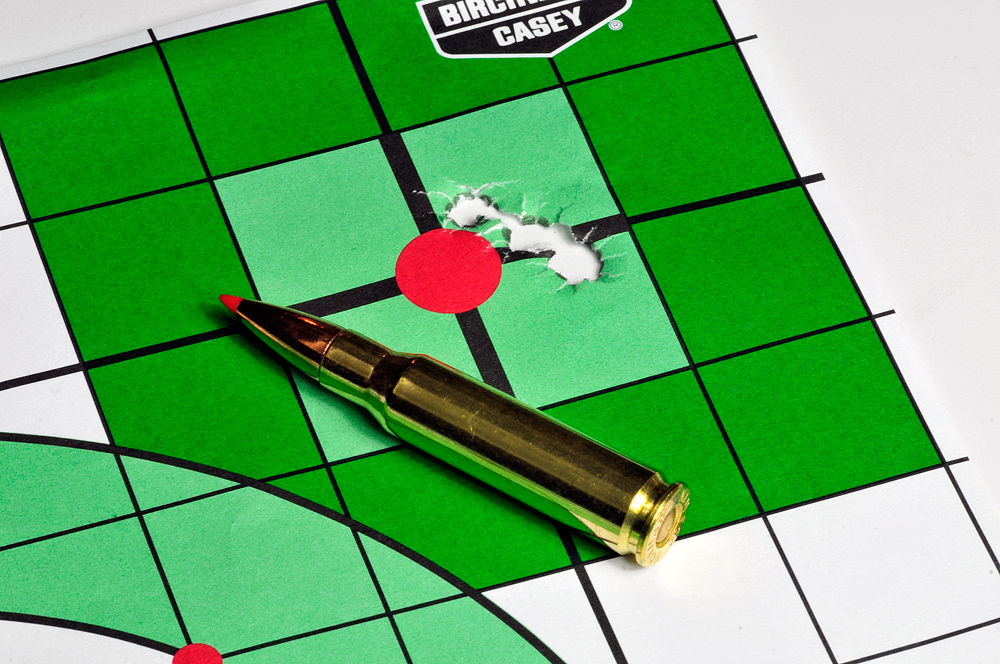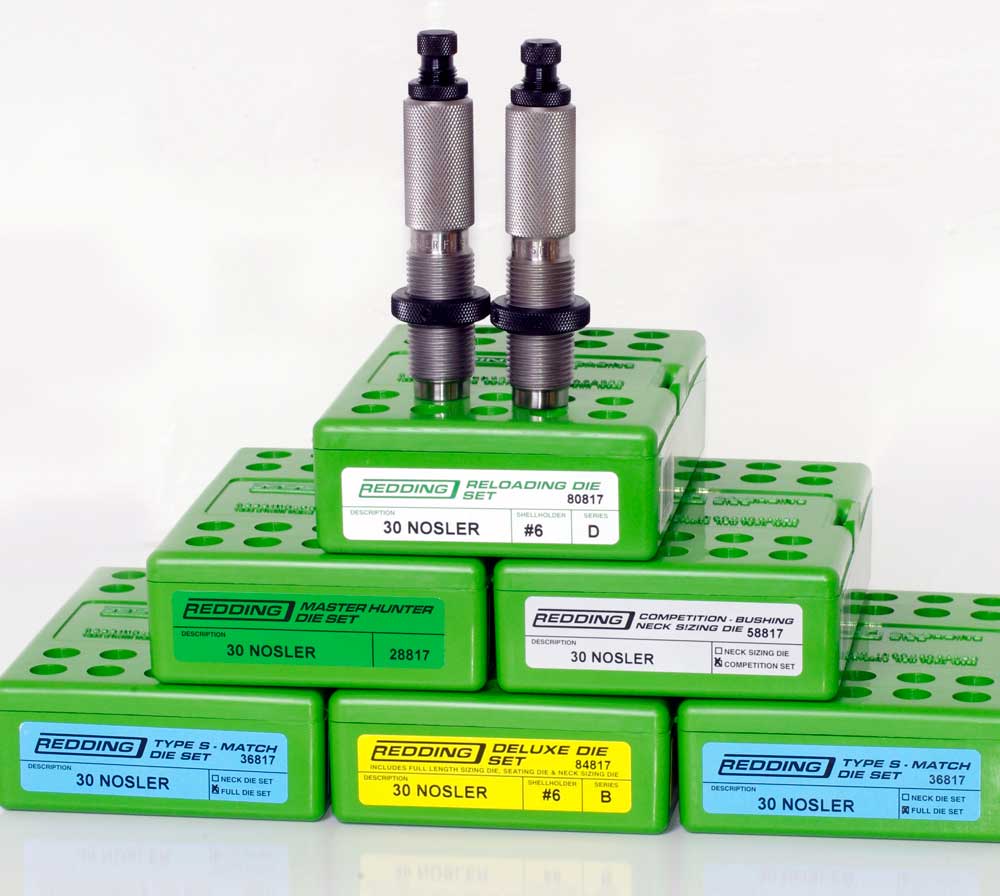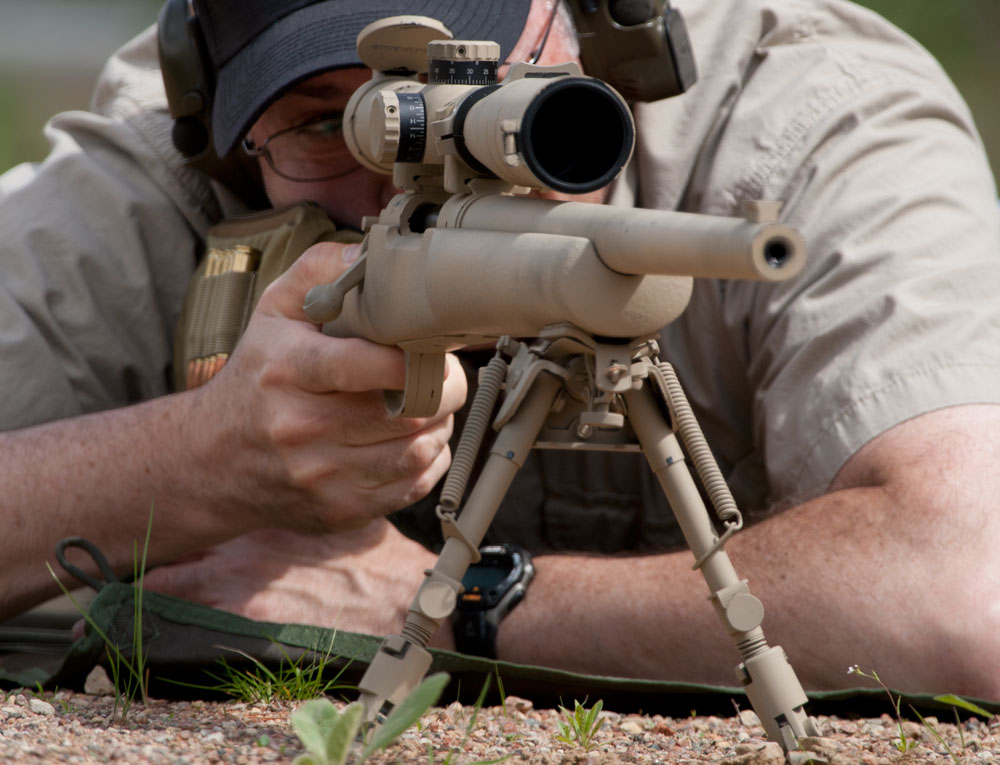


Off-the-shelf ammunition is top notch nowadays, but for guaranteed long-range accuracy, nothing beats handloading your own ammo.
Except for shooting a factory .223 Remington, for which you can find ammo almost anyplace nowadays, most long-range cartridges are going to require you to handload, if for no other reason than to be able to shoot more often for less money. But, just so you know, when you begin handloading, you will find yourself plummeted into an endless learning curve (or so it at least seems that way).
Building your own loads will produce an understanding of basic ballistics: bullet drop, velocity loss at different ranges, what powders will produce the best loads in your individual rifle, etc. But it’s worth getting it down, because handloaders always have an edge in the field. Yes, new factory loads today are indeed a far cry from what was available in my early days of rifle shooting, but you can always tinker with a handload and pull a few hundredths of an inch off that group size.
Certainly you can save some hard-earned money over those factory loads. Just by having the spent brass to work with you’re saving, and you can surely shoot for half or one-third the price of factory-rolled ammo, when it comes to the bigger, more expensive cartridges.
When I buy a new rifle, I run a series of handloads through it after a break-in period with factory ammo. What I’m searching for is that special sweet spot in powder charge, bullet weight and design, and even, in some cases, primer brand.
When that hotly accurate load is created, my new rifle will shave off a quarter-inch or more from its group size discovered during the break-in round. Truly, you should be able to cut groups to under a half-inch at 100 yards by handloading.
If your rifle sends a bullet to exactly one-half of an inch at 100 yards, that same group will be 1½ inches at 300 yards, two inches at 400 yards, and 2½ inches at 500 yards. That 500-yard shot can easily be a miss on a fat prairie dog, even without factoring in wind, temperature, altitude and about a dozen other elements that can make you miss the shot.

The key to reloading for long-range accuracy is to not go wild. Start by deciding on a few well-tested and well-researched loads. With a press, scale, powder measure and a set of dies, you’re in business to begin your experimentation. (Load tables appear in Chapter 2.)
I shop around for used dies that are in good shape; at gun shows I often find rifle presses at bargain prices. How long will all that loading equipment last? My Redding powder measure has been kicking out powder charges for better than 47 years to date, and my RCBS “C” frame press isn’t far behind.
From the days of the buffalo rifles in .45-70 (our first long-range tools), to the heyday of the .30-06 Springfield, one thing is for sure, and that is that rifle cartridges do fall by the side of the trail in favor of newer and better products.
Take, for instance, the newer Winchester WSM series of wide-bodied short cartridges in .270 and .300 calibers, both of which quickly usurped the WSSM line of cartridges from Winchester. Overall, today’s newer cartridges tend to burn powder more efficiently, reduce recoil levels even in lightweight rifles, and have been developing a good track record among big-game and varmint hunters in the field.

Bullet designs are also always being researched and improved upon. I worked on several new bullet types and charges for magazine articles in 2005. During that time, I found that VLD (Very Low Drag) bullets did improve group size and reduce drop figures. When VLD-classified bullets are designed, they are manufactured to make maximum use of boat-tail bases, long, smooth nose cones and a good ballistic coefficient (BC).
As most of you know (or should know), BC is the factored number assigned to a bullet that will demonstrates how efficient it will be as it flies. The higher the BC, the better that bullet will perform, at least most of the time.
There are problems with this system in that, at very low velocity, the BC calculation dies a quick death. Also, as the same bullet is fired in different rifles and cartridges and at various velocities, its BC number will change. Add high altitude and other atmospheric conditions and, again the BC numbers all roll out differently. That said, the best way to determine a bullet’s performance profile in real time, of course, is to shoot it.
Editor's Note: This article is an excerpt from the Gun Digest Book of Long-Range Shooting.

Next Step: Get your FREE Printable Target Pack
Enhance your shooting precision with our 62 MOA Targets, perfect for rifles and handguns. Crafted in collaboration with Storm Tactical for accuracy and versatility.
Subscribe to the Gun Digest email newsletter and get your downloadable target pack sent straight to your inbox. Stay updated with the latest firearms info in the industry.

![Best Concealed Carry Guns In 2025 [Field Tested] Wilson Combat EDC X9S 1](https://gundigest.com/wp-content/uploads/Wilson-Combat-EDC-X9S-1-324x160.jpg)


![Best 9mm Carbine: Affordable PCCs [Tested] Ruger Carbine Shooting](https://gundigest.com/wp-content/uploads/Ruger-Carbine-Shooting-100x70.jpg)
![Best AR-15: Top Options Available Today [Field Tested] Harrington and Richardson PSA XM177E2 feature](https://gundigest.com/wp-content/uploads/Harrington-and-Richardson-PSA-XM177E2-feature-100x70.jpg)
